News Archive
Filter By
- Abyssinian ground hornbill
- Addax
- Aldabra tortoise
- Allen's swamp monkey
- Alpaca
- American alligator
- American avocet
- American bison
- American flamingo
- American wigeon
- Andean bear
- Aquatic caecilian
- Arapaima
- Asian elephant
- Asian small-clawed otter
- Asian water dragon
- Australian snake-necked turtle
- Bald eagle
- Baltimore oriole
- Barred owl
- Bearded emperor tamarin
- Beaver
- Bennett's wallaby
- Binturong
- Black-and-white ruffed lemur
- Black-crowned night heron
- Black-footed ferret
- Black-tailed prairie dog
- Black-throated blue warbler
- Blue-billed curassow
- Blue crane
- Bobcat
- Brown pelican
- Bufflehead
- California sea lion
- Canvasback
- Cedar waxwing
- Channel catfish
- Cheetah
- Chicken
- Chinese alligator
- Chinese three-striped box turtle
- Clouded leopard
- Collared brown lemur
- Common raven
- Common yellowthroat
- Corals and sea anemones (anthozoa)
- Cow
- Crocodile monitor
- Cuban crocodile
- Dama gazelle
- Degu
- Dunlin
- Eastern corn snake
- Eastern indigo snake
- Eastern newt
- Eastern red-backed salamander
- Eastern screech-owl
- Eld's deer
- Electric eel
- Emperor newt
- Fennec fox
- Fishing cat
- Gaboon viper
- Geoffroy's marmoset
- Gharial
- Giant leaf-tailed gecko
- Giant panda
- Goat
- Golden-headed lion tamarin
- Golden lion tamarin
- Gray seal
- Gray wolf
- Green tree python
- Grevy's zebra
- Guam kingfisher (sihek)
- Guam rail (ko’ko’)
- Guinea pig
- Harbor seal
- Hartmann's mountain zebra
- Hawk-headed parrot
- Hellbender
- Home's hinge-back tortoise
- Hooded crane
- Iranian fat-tailed gecko
- Japanese giant salamander
- King vulture
- Komodo dragon
- Kori bustard
- Kunekune pig
- Land hermit crab
- Larger Malay mouse-deer
- Lemur leaf frog
- Lesser hedgehog tenrec
- Lesser kudu
- Lion
- Loggerhead shrike
- Long-tailed chinchilla
- Long-tailed salamander
- Maned wolf
- Meerkat
- Miniature donkey
- Naked mole-rat
- North American porcupine
- North American river otter
- Northern Luzon giant cloud rat
- Northern pine snake
- Northern pintail
- Northern red salamander
- Northern shoveler
- Northern snakehead fish
- Northern tree shrew
- North Island brown kiwi
- Norway rat
- Orangutan
- Orchard oriole
- Ossabaw Island hog
- Ostrich
- Ovenbird
- Pallas's cat
- Panamanian golden frog
- Patagonian mara
- Persian onager
- Philippine crocodile
- Prehensile-tailed porcupine
- Prevost's squirrel
- Przewalski's horse
- Pygmy slow loris
- Red-crowned crane
- Red-fronted lemur
- Red-rumped agouti
- Red-winged blackbird
- Red knot
- Red panda
- Red River hog
- Red ruffed lemur
- Red wolf
- Ring-tailed lemur
- Ruddy duck
- Schmidt's red-tailed monkey
- Scimitar-horned oryx
- Screaming hairy armadillo
- Semipalmated plover
- Semipalmated sandpiper
- Siamang
- Sitatunga
- Sloth bear
- Southern lesser galago
- Southern swamp sparrow
- Southern tamandua
- Spider tortoise
- Striped skunk
- Tanagers
- Tentacled snake
- Tiger
- Titi monkey
- Turkey
- Twig catfish
- Two-toed sloth
- Vietnamese mossy frog
- Virginia opossum
- Von der Decken's hornbill
- Western lowland gorilla
- White-cheeked gibbon
- White-faced saki
- White-naped crane
- White-nosed coati
- Whooping crane
Displaying 176 - 200 of 2391 articles.

I Can Remember Every Detail ›
"I was seven years old when the pandas first came to the Zoo. I remember watching the news and trying to memorize every detail..."

A Piece of My Heart ›
"My mother, Elaine Washburn, was an Asia Trail volunteer interpreter in the early 2000's. Mom had been a docent at the Ross Park Zoo in our hometown..."
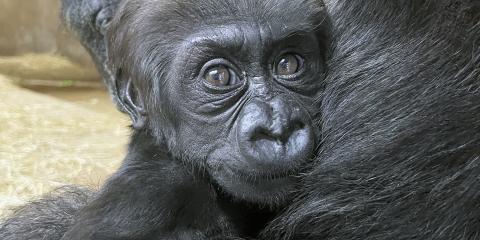
#GorillaStory: Zahra Goes for a Ride ›
There’s no better way to celebrate World Gorilla Day than with our adorable animal ambassador, Zahra! Keeper Lynne McMahan shares some of her favorite moments in this Q+A.
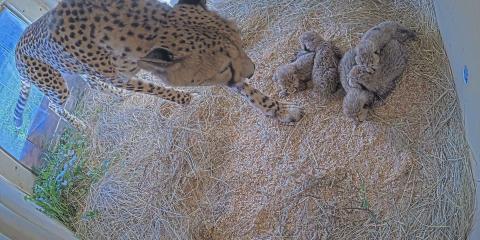
Litter of Five Cheetah Cubs Are Born at Front Royal Campus, Smithsonian’s National Zoo and Conservation Biology Institute ›
Carnivore keepers at the Smithsonian’s National Zoo and Conservation Biology Institute (NZCBI) in Front Royal, Virginia, are celebrating a litter of five cheetah cubs born to 8-year-old adult female Echo Tuesday, Sept. 12.
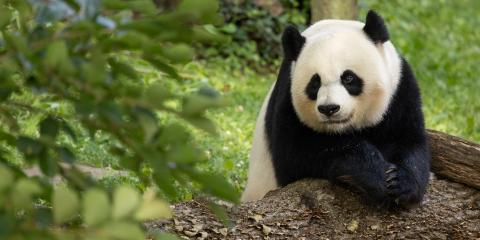
Media Advisory: Giant Pandas Celebrate Panda Palooza Beginning September 23 ›
Presentation of panda-friendly fruitsicle cakes to beloved giant pandas Tian Tian, Mei Xiang and Xiao Qi Ji in celebration of Panda Palooza: A Giant Farewell event.
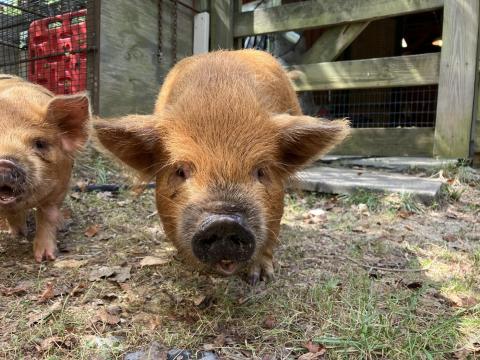
New at the Zoo: Kunekune Pigs! ›
The Kids’ Farm just got even cuter! In late August, three young kunekune pigs joined the Farm and are already charming visitors. Learn about this unique breed in our latest New at the Zoo feature, featuring animal keeper Nikki Maticic.
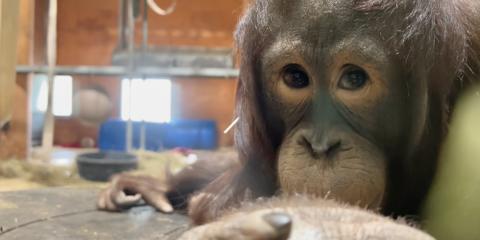
#OrangutanStory: Happy 7th Birthday, Redd! ›
Today, we celebrate Redd’s birthday! Our youngest Bornean orangutan has officially entered his “sassy sevens” era.
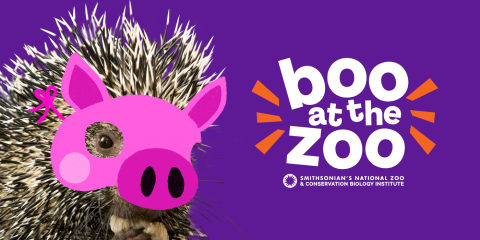
Boo at the Zoo Returns Oct. 20, 21 and 22 ›
It’s no trick, only the sweetest treat: Boo at the Zoo, sponsored by Mars Wrigley Confectionery, is back! The Zoo will be brimming with festive displays and spook-tacular trick-or-treating for this special ticketed event.

Smithsonian’s National Zoo Hosts Panda Palooza: A Giant Farewell, Sept. 23 to Oct. 1 ›
The Smithsonian’s National Zoo and Conservation Biology Institute (NZCBI) will celebrate its three giant pandas before the bears depart for China later this year. Visitors are invited to join the Panda Palooza, a nine-day onsite and online series of events.

New at the Zoo: Basil the Virginia Opossum ›
Earlier this summer, the Zoo welcomed Basil, a Virginia opossum (also known as a North American opossum) to the Small Mammal House. Get to know Basil in our new feature, written by animal keeper Mimi Nowlin!
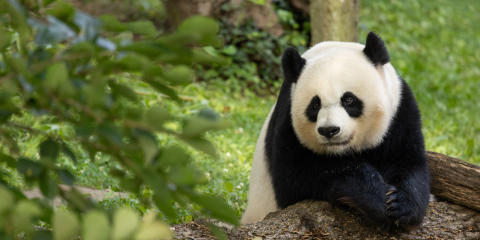
The Official Giant Panda Fan Quiz ›
Calling all cubs! Take this kid-friendly quiz and see how much you know about these beloved bears!

The Official Super Ultimate Giant Panda Fan Quiz ›
Are you an extreme panda fan? Try not to get bamboo-zled by this hardcore quiz!

#GorillaStory: Zahra Wiggles and Tries Her Best ›
Our western lowland gorilla infant hasn't quite figured out how to crawl—but she's getting close! Read the latest #GorillaStory update from primate keeper Francesca Bozzo.
Zoo Evacuation Aug. 29 ›
The Zoo was temporarily closed due to a bomb threat on Tuesday, Aug. 29.
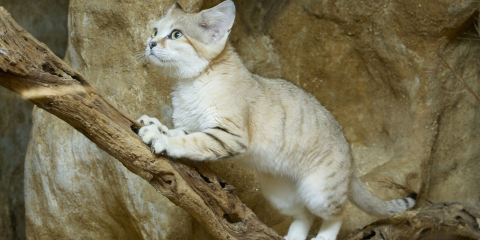
Can Sand Cats Survive Without Water? And Other Questions, Answered ›
With their big ears, wide eyes and furry paws, sand cats may look adorable… but they’re quite tough! Sand cats are the only members of the cat family that live exclusively in desert environments. Get to know these hardy felines in this Q&A.
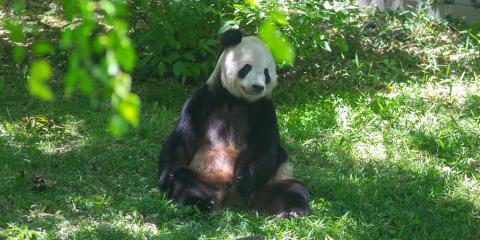
Giant Panda Tian Tian Celebrates Birthday ›
Asia Trail keepers celebrated giant panda Tian Tian’s 26th birthday with a special panda-friendly fruitsicle cake.
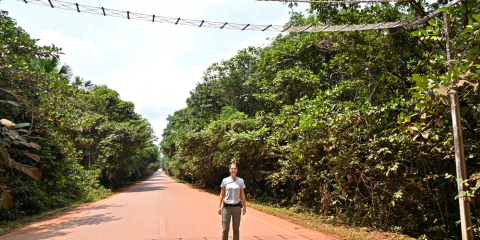
Focus on the Future: Fernanda Abra ›
Roads can be a dangerous challenge for terrestrial and arboreal wildlife. One scientist is trying to change that.
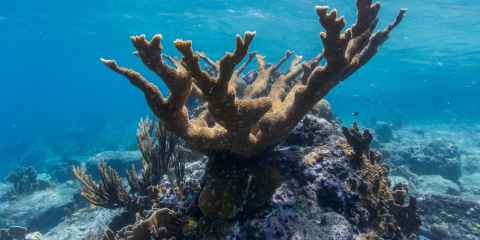
New Technique Could Facilitate Rapid Cryopreservation of All Coral Species ›
Smithsonian’s National Zoo and Conservation Biology Institute (NZCBI) researchers have achieved a breakthrough in the fight to save the world’s coral reefs from climate change annihilation.
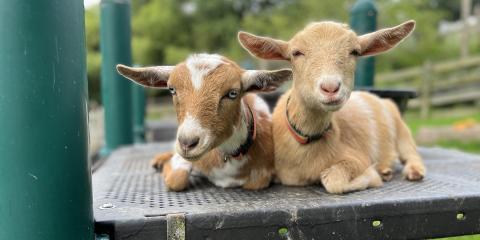
Meet Our Nigerian Dwarf Goats ›
Meet four Kids’ Farm residents who are goat-ally cute and curious! One-year-old sisters Betty and Wilma—and 8-year-old sisters Fiesta and Fedora—are the Zoo’s resident Nigerian dwarf goats.

Giant Panda Xiao Qi Ji Celebrates Third Birthday ›
This morning, Asia Trail keepers celebrated giant panda Xiao Qi Ji’s third birthday at the David M. Rubenstein Family Giant Panda Habitat.
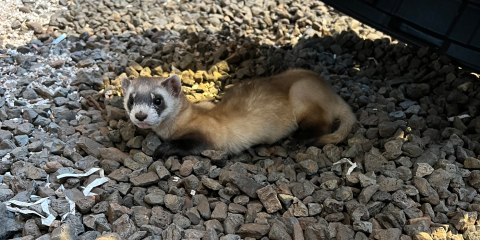
Black-footed Ferret Kit Update: Vaxxed and Ready to Roll ›
Our newest litter of black-footed ferrets is growing up fast. Find out what it takes to care for two-month-old black-footed ferrets in this Q&A with biologist Adrienne Crosier.

A Lucky Break: How One Przewalski's Horse Filly Beat the Odds ›
After a potentially deadly injury, one endangered wild horse got a new lease on life thanks to the Smithsonian's veterinary team.

How Long Can an Alligator Hold Its Breath? And Other Questions, Answered ›
Try not to get 'swamped' with these bite-sized facts about American alligators and their crocodilian cousins.

Media Advisory: Miracle Cub Giant Panda Xiao Qi Ji's Birthday Celebration on Aug. 21 ›
The Smithsonian's National Zoo will celebrate "miracle cub" Xiao Qi Ji's 3rd birthday on Monday, Aug. 21.
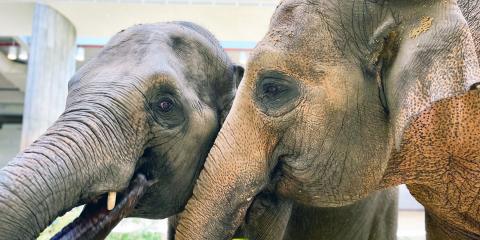
Getting to Know Trong Nhi and Nhi Linh ›
They’re spunky, opinionated and enjoy splashing in a cool pool on a hot summer day. Who are these playful pachyderms? Our Asian elephants, Trong Nhi and Nhi Linh! Get to know their personalities and quirks from Elephant Trails keepers Rebecca Riley and Ashley Fortner.